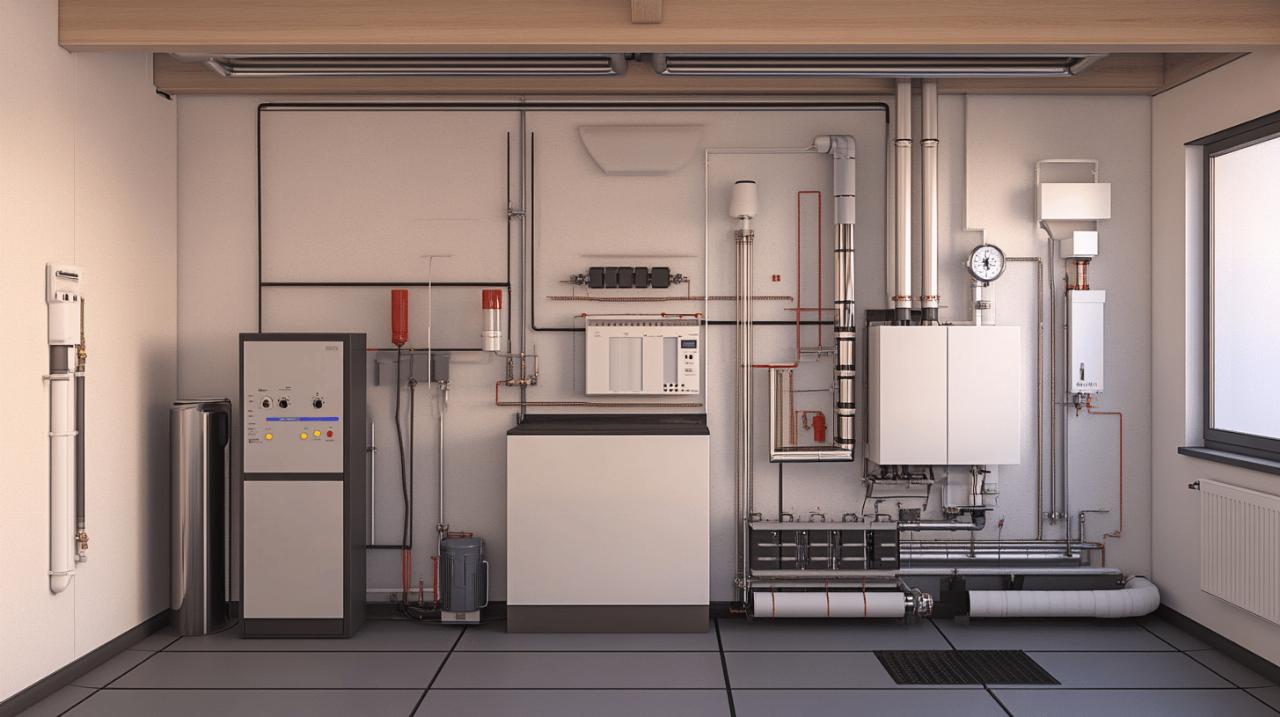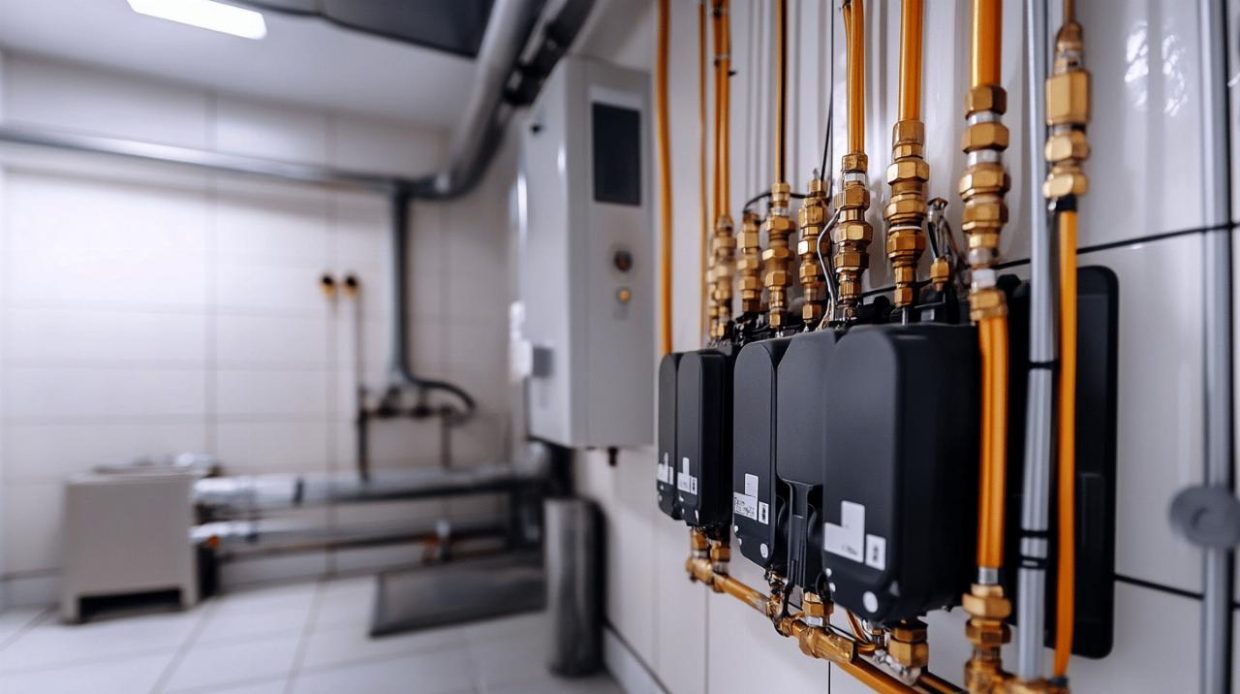When it comes to creating a comfortable home environment while keeping energy costs manageable, your heating system plays a pivotal role. With energy prices continuing to rise and environmental concerns growing, optimising your heating setup isn’t just good for your wallet—it’s beneficial for the planet too. Heating accounts for approximately 60% of a UK household’s energy use, making it the single most significant factor in your home’s energy consumption.
At Kamerolli Heating Solutions, we understand that an ideal heating system should be both efficient and utilise low-carbon fuel sources whenever possible. Through proper optimisation, you can potentially reduce your heating costs by up to 30%, a substantial saving for any household. This guide will explore essential strategies to enhance your home’s energy efficiency through smarter heating approaches.
Smart heating controls and technology
Modern heating technology has revolutionised the way we manage our home environment, offering unprecedented control and efficiency. Smart systems allow you to maintain comfortable temperatures while minimising unnecessary energy use, creating the perfect balance between comfort and conservation.
Programmable thermostats and zoning systems
Upgrading to programmable heating controls represents one of the most effective ways to reduce energy consumption. These sophisticated devices allow you to set your boiler to operate during off-peak energy tariffs, maximising savings without sacrificing comfort. Smart thermostats take this concept even further, with devices like wireless thermostats enabling control via smartphone applications or smart speakers. The most advanced models incorporate learning algorithms that adapt to your lifestyle patterns, potentially saving up to 25% more energy than standard controls.
Zoning systems represent another significant advancement, allowing different areas of your home to be heated to different temperatures based on usage patterns. This targeted approach means you’re not wasting energy heating rarely used spaces to the same temperature as your living areas. For instance, you might maintain a cooler temperature in bedrooms during the day while keeping living spaces comfortably warm, then reverse this pattern in the evening.
Smart meters and energy monitoring devices
Understanding your energy consumption is the first step toward reducing it. Smart meters provide real-time information about your energy usage, making you more aware of which activities and appliances consume the most power. This visibility often naturally leads to more mindful consumption habits. Many energy suppliers now offer these devices free of charge to their customers.
Beyond basic smart meters, dedicated energy monitoring systems can provide more detailed insights into your consumption patterns. These devices track electricity usage in real-time, allowing you to identify energy-hungry appliances and adjust your habits accordingly. Some advanced monitors can even break down consumption by individual circuit or appliance, giving you granular control over your energy use. This data becomes invaluable when assessing whether your heating system optimisation efforts are yielding the expected results.
Insulation and draught-proofing strategies
 Even the most efficient heating system will underperform in a poorly insulated home. Heat loss through inadequate insulation effectively means you’re paying to heat the outdoors. In an uninsulated house, approximately one-third of heat escapes through the walls and 25% through the roof, highlighting the importance of comprehensive insulation strategies.
Even the most efficient heating system will underperform in a poorly insulated home. Heat loss through inadequate insulation effectively means you’re paying to heat the outdoors. In an uninsulated house, approximately one-third of heat escapes through the walls and 25% through the roof, highlighting the importance of comprehensive insulation strategies.
Loft and cavity wall insulation benefits
Loft insulation serves as a critical barrier against rising heat. Since warm air naturally rises, uninsulated lofts become major sources of heat loss. Installing proper loft insulation creates a thermal barrier that keeps warmth inside your living spaces rather than escaping through the roof. The insulation material traps air, which serves as an excellent thermal insulator, significantly reducing the amount of heat that can transfer through your ceiling.
Cavity wall insulation offers similar benefits for homes with cavity walls. The process involves filling the gap between the inner and outer walls with insulating material, creating a continuous thermal barrier around your home. This intervention not only reduces heat loss but can lead to substantial savings on energy bills over time. Modern insulation materials are designed to be moisture-resistant and long-lasting, making them a wise investment for improving your home’s energy profile.
Sealing windows and doors to prevent heat loss
Windows and doors often represent significant weak points in your home’s thermal envelope. Draught-proofing these areas involves identifying and sealing gaps where cold air enters and warm air escapes. Simple measures like applying weatherstripping around door frames, using draught excluders at the base of doors, and sealing gaps in window frames can make a noticeable difference to your home’s comfort level and energy efficiency.
Window treatments also play an important role in thermal efficiency. Closing curtains at night adds an extra layer of insulation, while opening them during daylight hours allows natural solar heat to warm your spaces. For maximum benefit, consider installing heavy thermal curtains specifically designed to reduce heat transfer. In homes with single glazing, the addition of secondary glazing or upgrading to double or triple glazing can dramatically improve thermal performance, though this represents a more significant investment.
By implementing these heating system optimisation strategies, you can create a more energy-efficient home that maintains comfortable temperatures while reducing both your energy bills and carbon footprint. Remember that small changes can add up to significant savings over time, making even modest improvements worthwhile investments in your home’s efficiency.

